#ipotanes
Text
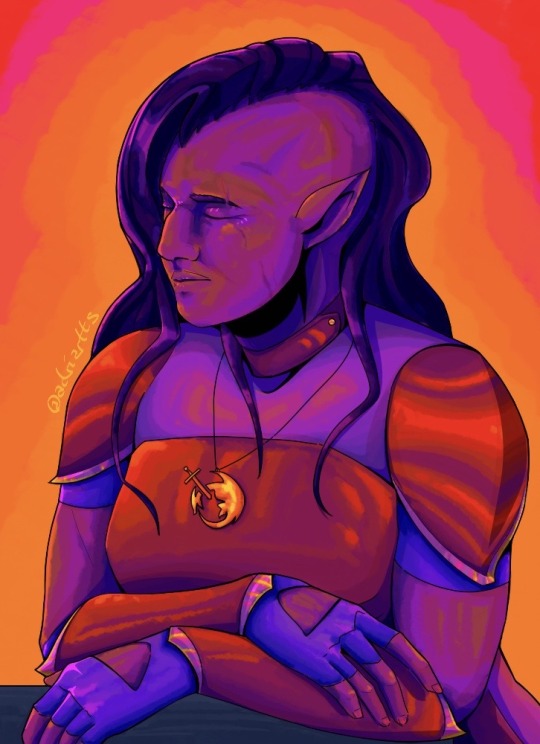
fiddling with colors
8 notes
·
View notes
Text



Two more screenshot redraws, also spurred on by @itsmergb - the second one has a wingless version simply because they covered up a lot of the details.
#my aus: monster kids au#zach's art#ah fuck me i meant to post this like. back in april#jim lake jr#barbara lake#draal#ipotane!barbara#sphinx!jim#trollhunters#trollhunters au#screenshot redraw#dreamworks trollhunters#tales of arcadia#toa#toa au#tales of arcadia au
116 notes
·
View notes
Photo

Source details and larger version.
My collection of vintage centaurs is galloping along.
19 notes
·
View notes
Note
About Nearl by the way, or to be more presises Nearls. Do you have any ideas why all of them get halos on their E2 art? Młynar and Margaret get classical halo, and Maria modern version of it.
Hmm. I think I get what you mean by halo, though Mlynar's is in the background?
But honestly I feel I'm not knowledgeable enough to really say because Nearl's I almost feel is referencing something I'm not aware of and I'd be taking a leap with what I am thinking.
Being that the Nearls come across as rather "holy" with their arts mainly but you can also go a bit out of the way to say how the wings that are present for them, typically in their designs, are reminiscent of angel wings. So halos would further that image of them.
That said, as far as I'm aware there's no particular connection between Pegasus and Christianity unlike Griffins for example, though it would make sense for Kazimierz generally despite no connection between it and Laterano to our knowledge.
I'm not sure how sold I am on this idea though and I don't want to say there's a connection where there isn't one but it's about the only thing I myself can think of.
#ask#I'm more interested in the greek inspirations honestly#like#they're pegasus#and yet#mlynar has a centaur in his#blemi's could be theorized to be an ipotane#which are even more greek creatures#then there's the blood knight who is from minos#like I don't think the nearls are minoans#or kazimierz has a connection with minos#has some grander greek inspiration etc#but it's curious#always is with these things#at least to me because I love what creatures ops are based on lol
1 note
·
View note
Text
how are horse legs so incredibly fucked. like compared to other ungulates
#drawing ipotanes. what the fuck#why do their ankles look like that. other ungulates looks kind of normal and horses are like 'no <3'
0 notes
Text
I think folklore and mythology should have more horse-humans. Tikbalang, centaur, ipotane, Al-Buraq, nuckelavee, Mǎmiàn, onocentaur/silenus satyr, vazila, and kumelgan is not enough.
11 notes
·
View notes
Note
More monster ideas! The Hyuuga could be some type of harpy. Really drive home that 'caged bird' concept you know?
And i think Gai would be a minotaur or an Ipotane
I think Gai would be a great Phoenix as i’m bery attached to that (and really fits in with the idea of him surviving using the eight gates when his father didn’t) so outwardly he seem’s human but can keep coming back to life if he dies (maybe only a select few have seen this happen). Also fits with ‘Both Kakashi and Gai look and seem human but neither of them are!)
Love the idea for the Hyuga! Especially Neji who connects with that caged bird symbolism the most out of them all.
The hounds Kakashi summons are also Inugami!
0 notes
Text
WIPs


My Linktree | Please consider following :)
A few fantasy character sketches I'm working on. Unicorn ipotane, rosy maple mothman, mountain goattaur/caprataur.
#Art#Monster art#Original character#artblr#artists on tumblr#character illustration#digital art#drawing#illustration#monster lover#mothman#oc artist#polish artist#sketch
1 note
·
View note
Text
Monsters of the Mind (Remake) (V2) Part 1

Monsters of the Mind is Group 7 in the Weird n' Wild Creatures set. This group covers creatures that evolved in the imagination of humanity. From myths and legends, folklore, and even literature, this covers some of the most fantastic creatures yet. This group is represented by the color purple.
[Greek Mythology]
Cyclops
Gorgons
Minotaur
Centaur
Chimaera
Chrysomallos
Scorpios
Hydra
Cerberus
Pegasus
Lamia
Arachne
Manticore
Catoblepas
Perytons
Sphinx
Ladon
Phoenix
Griffin
Hippogriff
Sirens
Onocentaur
Harpies
Typhon
Echidna
Argus Panoptes
Antmen
Orthus
Stymphalian Birds
Nemean Lion
Erymanthian Boar
Golden Hind
Cretan Bull
Calydonian Boar
Karkinos
Amphisbaena
Geryon
Ipotane
Gegenees
Buer
Ophiotaurus
Alectryon
Python
Ichthyocentaur
Satyr
0 notes
Text
Anyway sketch dump of my new dnd character
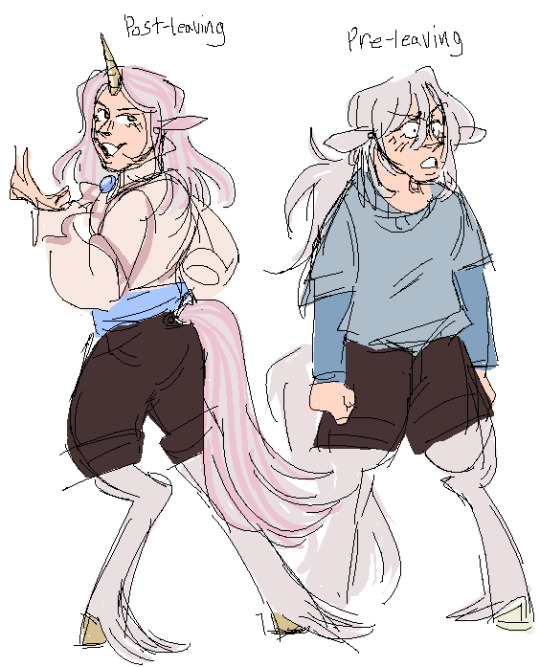
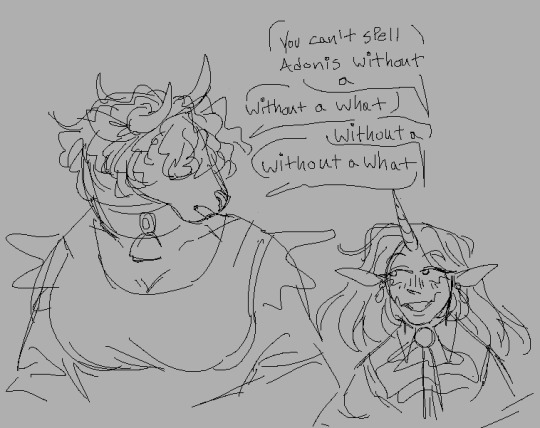
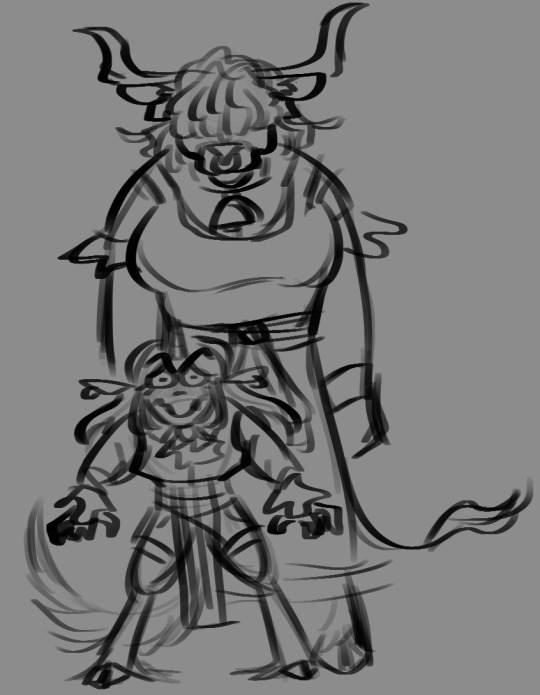


#prattle#my art#adonis#dottie#atlas#tac dnd#taps fork against tin can to draw in any nearby dms#pspspspsps look at my sorcerer barbarian ipotane
49 notes
·
View notes
Text

dragonslayer!!
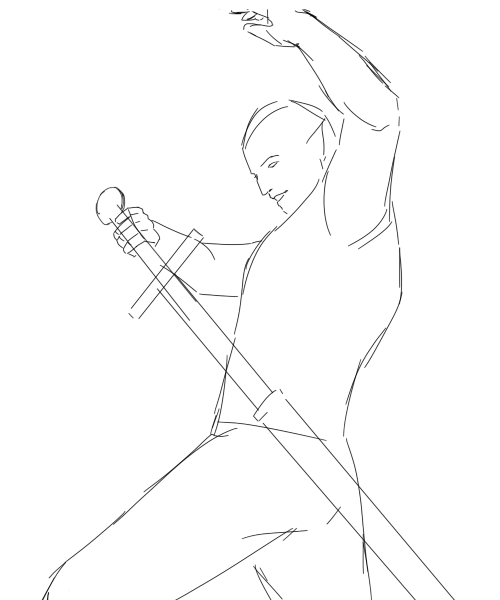
#Brooke Ulriche#ipotanes#ocs#me when i FUCKING get you#letting her have a good fun time. for a lil bit :)#i enjoy her immensely if u couldn't tell
18 notes
·
View notes
Text


Monster Kids AU!
I joined a TOA roleplay server back in August, and it's been really fun! I've had the opportunity to talk with some of the members who really like my silly monster AU, so I've been drawing up some references and general content here and there.
Some Jlaire fluff, and a trio of designs for Barbara, Eli, and Steve! I forgot to calculate height in, so Barbara's too short (I imagine her more of half a head or so taller than Steve, sans the antlers), but I still like the doodle. Both from the last week or so.
commission sale/info here
#zach's art#my aus: monster kids au#jim lake jr#sphinx!jim#claire nuñez#harpy!claire#barbara lake#ipotane!barbara#eli pepperjack#bat!eli#steve palchuk#deer faun!steve#trollhunters#dreamworks trollhunters#trollhunters au#tales of arcadia#toa#toa au#tales of arcadia au
114 notes
·
View notes
Text
Ipotane
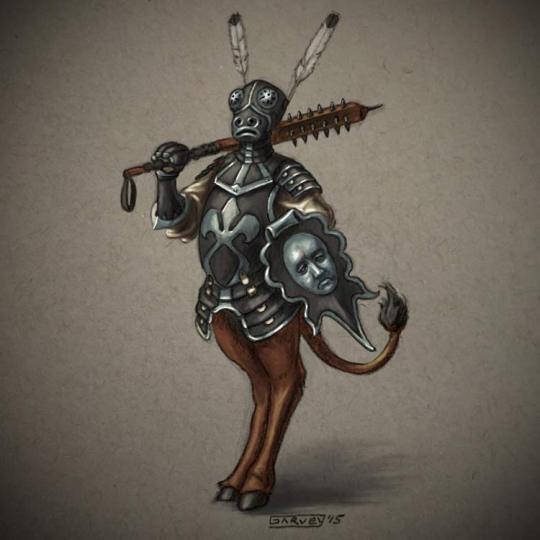
Image © Mike Garvey, accessed at Mythical Beast Wars here
[”There is a land of the Dingling People. Its people have hairy legs below their knees as well as horse hooves. They are adept at running.” -Guideways Through Mountains and Seas
Yes, I’m going to be covering some of the many chimeras, monstrous races and miscellaneous weirdos found in Guideways Through Mountains and Seas, the classic Chinese cosmology/bestiary. But why aren’t I calling this the Dingling? Because I did some research, and the Dingling were a real ethnic group. I greatly enjoy monstrous humanoids, but have no desire to perpetuate 2000+ year old racism. So even though the name ipotane for a horse-legged humanoid is dubious at best, it’s a name.]
Ipotane
From the waist up, this humanoid is indistinguishable from a human, but they have the hoofed legs of a horse and a long tail. They wear a suit of heavy armor.
The ipotane are brutish and warlike humanoids known for their speedy and devastating raids on other peoples. Most ipotanes are evil, and they view other cultures as weak and worth preying on if they cannot defend themselves. They see little virtue in making things for themselves if they cannot be stolen, and arms and armor are the rare crafts they take any pride in. An ipotane’s voice is harsh, but can become surprisingly melodious, and they train at mimicking the sounds of beasts in order to lure prey—both animal and humanoid. Ipotanes tend to get along well with orcs—the ipotane are faster and benefit from their allies’ darkvision. Such mixed bands are particularly devastating to settled communities; the ipotanes strike in the day and the orcs at night, leaving no time to rest or recover from their depredations.
Although ipotanes are often drunken and dissolute in their free time, they are skilled at the art of war. Ipotanes advance by character class, and most of them are fighters or barbarians. Few ipotanes have the patience or mental skill for wizardry or alchemy, but clerics, druids and sorcerers are known among them. The most feared and ambitious ipotane leaders are anti-paladins, and these scourges can take an ipotane troop from a localized threat to greater influence and widespread terror.
Ipotanes as Player Characters
An ipotane does not have racial Hit Dice and advances by character class. An ipotane character has the following traits
+2 Str, +2 Con, -2 Int Ipotanes are strong and hardy, but have little appreciation for intellectual pursuits
Medium size An ipotane gains no benefits or penalties from its size
Speed 40 ft.
Natural attacks An ipotane gains a hoof attack that deals 1d4 points of damage. This is always a secondary attack, even if the ipotane makes no weapon attacks in the same round it attacks with its hoof.
Agility An ipotane gains a +4 racial bonus to all Acrobatics checks
Sound Mimicry An ipotane can perfectly imitate the sounds of animals. To use this ability, the ipotane makes a Bluff check opposed by the listener's Sense Motive check to recognize the mimicry, although if the listener isn't familiar with the person or type of creatures mimicked, it takes a –8 penalty on its Sense Motive check. The creature has a +8 racial bonus on its Bluff check to mimic animal sounds it has listened to for at least 10 minutes. The ipotane cannot duplicate the effects of magical abilities (such as bardic performance or a harpy's captivating song). This ability does not allow an ipotane to speak or understand languages it doesn't know.
Languages An ipotane begins play speaking Ipotane and Common. An ipotane with a high Intelligence score may choose from the following bonus languages: Abyssal, Gnoll, Halfling, Orc
Ipotane fighter 1 CR ½
XP 200
CE Medium humanoid (ipotane)
Init +0; Senses Perception +1
Defense
AC 17, touch 10, flat-footed 17 (+6 armor, +1 shield)
hp 13 (1d10+3)
Fort +5, Ref +0, Will +1
Offense
Speed 30 ft. (40 ft. unarmored)
Melee morningstar +4 (1d8+3), hoof -1 (1d4-1)
Ranged longbow +1 (1d8/x3)
Statistics
Str 17, Dex 10, Con 16, Int 10, Wis 13, Cha 8
Base Atk +1; CMB +4; CMD 14
Feats Cleave, Power Attack
Skills Acrobatics +1, Bluff -1, Perception +1, Survival +4; Racial Modifiers +4 Acrobatics
Languages Common, Ipotane
SQ sound mimicry (animal noises)
Ecology
Environment warm and temperate hills
Organization solitary, band (2-6), corps (8-20 plus 1 2nd-4th level captain) or troop (40-100 plus 50% noncombatants plus 1 2nd-4th level captain per 20 individuals and 1 5th-7th level commander)
Treasure NPC gear (breastplate, light steel shield, morningstar, longbow, 20 arrows, other treasure)
162 notes
·
View notes
Photo
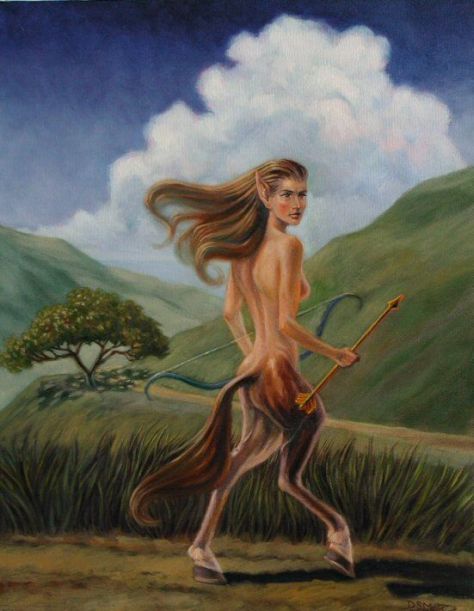
In Greek mythology, ipotanes are a race of half-human, half-horse creatures, similar to centaurs. Unlike centaurs, however, ipotanes only have two legs. Some also have the ears of a horse.
Ipotanes are typically viewed as valiant and noble creatures, and are said to be highly sexual. Their name means "knight."
Image source.
Monster master list.
Suggest a spook.
107 notes
·
View notes
Note
Okay, slithering back in here again💕💘💞💗💖💘💕💞. I'm a linguistics freak. I need to know if you have plans for language(s) in your work.
Are there any characters with distinct speech patterns, maybe using different sorts of words than others (due to heritage, education, geographic location)?
Do you ever use modern slang or local vernacular when writing? Is it a conscious or unconscious choice? Do you take influences from any real world english dialects in your work?
My god hello I love this ask so much thank you for the interest ily.
I DO have language things, but I absolutely have NO linquistic background and don't really know how languages are put together most of the time but what i DO have is very specific ideas about what they SOUND like so. Bear with me
Each species has their own native language, and most everybody is also fluent in a common language, Solan (they might be SOME exceptions but you would be hard pressed to find someone who didn't know it)
I don't have a TON of specific stuff about Solan, but generally it's a mishmash of words from each individual language, warped over the centuries into a more distinct set of sounds. It began as more of a pidgin language, very disconnected, mostly just enough to serve the purpose of interspecies communication without a whole lot of personality or flow. As time (LOTS of it) passed, some parts of Solan evolved in one way while other languages evolved another until it is now distinct, but you could still trace many words back to their roots in their language of origin, if you wanted.
The species languages are still a work in progress, but I have pretty set ideas about a few of them. Disregard my names if you want because I don't know if i'm gonna want better etymology for them later or anything (right now it's just... what sounds nice to my ears). Montaran (fauns), Arbor (satyrs), and Praetar (ipotanes) are all in the same family, kind of like romance languages or whatnot, but don't draw from each other quite as much as, say, italian and spanish, for example. But they're formed with generally the same collection of sounds, with similar enough grammar structures (particularly Arbor and Praetar) that they are more coherent to each other than to any of the others.
Montaran in particular is the one of these I've fleshed out most thus far: it is heavy in repetition and is mostly hard sounds. I don't know if any of this will make sense because again- no linguistic knowledge in this brain- but Montaran uses the repetition of a base segment, usually a vowel sound, as a distinction between meanings. This is especially evident in names, which all follow a sort of consonant-vowel-repeat-at-will format. (where most non-name words follow a consonant-vowel-consonant format. I know that sounds extremely similar, but the difference is mostly in how they end. Non-name words end in consonants). For example, Natakala might be the name of a town: that's four segments, each with the same vowel sound. Place names are typically long, whereas people's names are typically actually rather short- just two or three syllables, because of the way that fauns use them among families.
This is getting a little off topic now but fauns typically have children in sets of twins- just a little biological quirk (like having litters of kittens or whatnot). Because of this, twins will typically be referred to as one whole, rather than two separate entities. They have individual names, but they are built within each other so as to be used as one- let me give another example because I don't know how else to explain it: you have a twin named Sumaya and a twin named Suna, those twins, as they would typically spend lots of time together, would often be referred to as Sumayasuna, like one single being. That name, and their individual names, were chosen to be part of one another, they are named to be meshed, or rather, they are given an enmeshed name which can be split. And both their individual and twinned names follow that consonant-vowel-repeat format, because that's the rule of faun names.
I feel like this is really long already but you asked and I love to deliver so the other language I have anything concrete on is Shotali (nightlings). They're unique in the sense that the other humanoids have distinctly mammalian phonetics, either because they're mammals, or, in the case of iarans (a species of merfolk- I'll get into nix later), because they evolved to mimic the sounds made by those mammals. Nightlings do utilize much of the same phonetics (again, driven by mimicry), but because there is an evolutionary gap where they did not mimic other humanoids, because they were separated from them, their is a distinct avian aspect to their languages that other species lack. This is also something that makes me have such specific ideas for what nightlngs' voices sound like, but that's another thing entirely so I won't get into it.
Nightlings have an odd ability to make this clicking sound at the back of their throat- like clicking your tongue, but it makes the sound from something specialized for that sound, rather than just jury-rigging something with your tongue and the roof of your mouth. This, naturally, forms a part of their language. It's used much like a glottal stop, but whereas a glottal stop is the absence of sound, this click is an additional one and so is almost treated like a consonant. The only time it's used in conjuncture with another sound is in hard consonants, which are rare in Shotali (it's mostly soft consonants and vowels), in which the sound, say a K or V, is made at the same time as that click. Nightlings new to speaking Solan, particularly early post-cataclysm, as otherwise they would learn it throughout childhood like the other species, may pronounce this clicking consonant even in Solan as part of that accent.
Merfolk are the other species that has Things, because I just have yet to have any concrete ideas about how Arbor, Praetar, or Homonic (humans) function. Iarans, as vocal mimics, can and do speak, but they actually lack a verbal native language. What they do have is a visual language, stemmed from nix, who lack vocal chords. This sign language (I just... I just called it Handspeak but that sounds stupid so,,, i'll come up with something better maybe eventually) isn't quite like any terrestrial sign, real-world or otherwise, but it IS the linguistic precursor to Solan sign, used on land across species as needed (the only language to not have a 'home' species). Because they use it underwater, it's slower, with less focus on movement than in asl (i'm using asl as an example because it's the one I know, but a lot of sign languages are similar in structure, especially french sign language). Rather, handshape has much greater meaning and is more complex, less repeated, because fast movements underwater are harder to make, so rather than exist in a general-handshape and specific-motion format, Handspeak exists in more of a specific-handshape general-motion form. That 'base motion' is typically slower and larger- accounting a little for decreased visibility in water.
Solan sign, or just Sign, made it's way out of water and is used across the continent, but is very concentrated on coasts, because it's used to talk with merfolk (particularly nix). It's more common than sign languages typically are by hearing folks in the real world, but it's still not necessarily a language that lots of people are familiar with, especially inland. It has a very different structure than Handspeak, as it isn't hindered by water and is used in a different context. Sign typically does follow the more familiar general-handshape specific-motion pattern, so it's a bit easier to learn and moves quicker than Handspeak. A lot of the words use the non-dominant hand as a 'base' of sorts, providing a center point for the other, by which the motion of the dominant hand and its position in reference to the base define the meanings of the words. Another example because I don't know how to explain: Think of the ASL word for 'year' (google it assuming you don't know, handspeak.com my beloved). The 'base' hand is like the one that stays in the middle, while the dominant hand is the one that revolves around the other. So in Sign, that base could be held in the center of the body, or to the right, or wherever you want that's convenient, and the hand that's doing the motion is defining the word by it's relation to that base. If you only have one hand free, the base is assumed to be the center of your body, which requires you to be a little cleaner with your signs, but you can easily do it one-handed, which is useful for when you're busy with other things. ASL relies a lot on placement in relation to the body: one thing by your head means a different thing than if you sign the same motion with the same handshape by your chest, or up in the air, etc. Sign relies less on that, and more on a base hand, or the implication of one, in the case of one-handed signing. Not to say it never uses the body because it does, but not as much, and not as inherently.
Oh god oh fuck I'm writing you an essay.
I haven't played as much with distinct speech patterns as I probably could have, because i'm really uncertain how i would want to go about it???? I mean, i guess i do a little bit but not quite consciously. Like I've written a few things with Julian and/or his family, and in my quest to find a good 'god.' substitute in a christianless environment (lol) i gave them a weird little specific curse that I now realize nobody else has ever used and i don't like enough to extend across others, so it now sounds like either his family specifically, or the region he grew up in, has this way of cussing that nobody else does. And I don't like it as a world thing, but i do like it as a family thing, because then that's a little something specific to just them that I can play around with.
Or say, Reiji speaks very formally. Not in the sense that he's overly stuffy or even... formal isn't quite the right word, but he's very deliberate about his choice of words most of the time. In an attempt to minimize misunderstanding, he is overly specific and/or tries to capture exactly precisely what he's trying to say in a way that is satisfying, which sometimes leaves more questions than if he said something less accurate to what he wants to convey, but more broad and thus easier to understand. He is usually very clear, very little grey area for interpretation, but when even he isn't sure what he's conveying, he gets really confusing really fast if whoever he's talking to can't make the logic leaps that he can in those connections.
And then like the thing about modern slang and local vernacular is that i almost certainly incorporate it into my writing without even meaning to, because that's how I talk and think and hear people talking and thinking. And I am also subject to using hyperspecific words because I want things to mean exactly what I'm thinking and that's how i start to become best friends with words like 'rouged.' The same with dialects, I don't on purpose take influence from them, but the ones I hear and use make their way into my writing because I have different associations for each one. I can't think of a really good example right now but I mean,,, is writing not just returning all the words you've read and heard and said into something else? Into something that's hopefully a little bit more than the sum of its parts?
I'm going to thank you once more in the actual body of this post because this ask made me go "FUUUUCK YESSSSSSSS" and i'm so glad you like to hear about my fucked up world in my fucked up brain or whatever the hell. if you (actually have knowledge of linguistics) want to recommend things or say something doesn't make sense or say literally anything about literally anything PLEASE DO. I LOVE INPUT AND COLLABORATION AND YOU ARE A REAL ONE <3 <3
#worldbuilding#ask#language#I LOVE U. EVERYTHING TO ME#I WOULD HAVE MORE TO SAY IN THE TAGS PROBABLY BUT IT'S CURRENTLY 3:40 AM AND I NEED TO GO TO BEDDDDDDDD#ALSO UR TAGS ON THE LAST THING MADE ME HAPPY. LOOK AT REIJI. U WILL LOOK AT HIM AND F E E L LIKE I DO#LMAO. THANK U BESTIEEEEEEEEEEEEE#SLITHER INTO MY ASK LITERALLY ANY TIME. ILY
3 notes
·
View notes
Text
Centaurs
Centaurs are a race of folklore mystics with geomancy (earth magic) powers, not to be confuse with beastmen of similar build. From the waist up their bodies are humanoid normally looking the nearest other humanoid race while from the waist down their body is that of an equidae, looking like they have replace the creature neck with their humanoid half, the equidae half normally looks like whatever equidaes live in the area.
Centaur Biology
Centaur biology is mix of equidae and humanoid biology in a that seems to combine the best of both for the most part. Centaurs have greater stamina then equidae allowing them to run much longer and then durable too, easily being able to do things that would kill a humanoid or equidae, and of course they have the power of a horse in every punch. Also a centauride(female centaur) only has a gestation period about nine months like a human, the males are call centaurus while we on the subject. Now with that said there really isn’t much else to say about centaur biology with the except that some centaurs have equidae ears instead humanoid ears and that centaurs are can’t handier alcohol. For the ixionidae or base centaur anyway, you see centaurs come in five strains and the one we been talking about is the ixionidae the most common strain of centaur. Now before we start on the others it needs to be said that the reasons the different kind of centaurs are call strains is because any centaur parents can have any strain of centaur as a child.
Ipotane.
Ipotane are the next most common strain of centaur despite not looking like one. While they do have equidae legs and tail, as well ears, they aren’t quadrupeds they are bipeds and often confuse for satyrs. Of course, being smaller does mean they are physically weaker than other centaurs but they are still stronger than humans, however because of their weakness they are often giving the lowest jobs in centaur society.
Onocentaur
Onocentaurs are a little less common then ipotanes and are almost the same as ixionidaes in every way, but one that is. They have no front legs at all despite having the lower half of a horse, yet this doesn’t seem to affect them much as they move just the same as ixionidaes. However, does make them a little slower and weaker than the ixionidaes which is why they get jobs that requires less physical strength and more intellect in centaur society.
Magnesia Mare
Magnesia mares are different from other centaurs in many ways, first they are all females, and second they look like equidae made from unworked rock, even their manes look like this! In fact they are so different from the others they are listed as epic mystics because of their magical abilities. Abilities which in centaur society make them seen as holy figures that reach the highest levels of respect in their cultures, and if you were wondering they can speak just fine.
Long Live: While other centaurs live about as long as humans, magnesia mares have a life span about 700 years long.
Breeding Mare: One of the reasons magnesia mares are so respected in centaur society is because amazing breeding ability. Their gestation period is half as long as that of other centaurides with a much higher odds of having multiple births at once, and on top of that they seem to have no trouble at all with pregnancy or child birth, long term or short term. Because of this once a magnesia mare becomes an adult it is rare to see them not pregnant, as number of adult offspring they have raises their rank in almost other magnesia mares. They rarely raise the offspring themselves normally giving them over to other centaurides, normally the wife of the child’s father. Magnesia mares rarely take husbands instead choosing the sire of their children from any of the herds centaurus that meets their standers, this is seen as a high honor for both the centaurus and their wife, and if they aren’t it is rare that stays the same for long after being pick.
Rock Biology: Strangely magnesia mares aren’t organic at all and can’t be affected by anything that can only effect organic beings, but because they are living things they are effected by things that effected living things in general.
Rocky Hide: Despite whatever kind of rock they look like they are made of all magnesia mares are as touch as bedrock.
Hippocentaur
Hippocentaur rarest and strongest of all centaurs, they are mythical mystics. When it comes to looks it isn’t hard to tell them apart for other centaurs as they are almost twice as big as ixionidaes, have set of horns on their heads, always have equidae ears, a mouth full of lion like fangs, retracting claws on their hands, and despite their humanoid halves being no more hairier then a human there facial features are like those of a cercopithecidae. They also come in dark pastel colors. Needless to say, wherever hippocentaurs are found they are the leaders of their herds at least, and if they are centaurus then they alone can breed any magnesia mares the herd has.
Manna Drain: Hippocentaur can suck the manna right of any other form of mystic to fuel their own magic. This is very painful to mystics and if use to much can kill them.
Long Live: Hippocentaur can live up to 700 years.
Manna Armor: Hippocentaur generate a form of force field around their bodies that absorb most damage that is throw them, giving a form of damage reduction. However, it can only absorb so much damage at one time.
12 Horsepower: Hippocentaur have the combine strength and speed of one dozen horses.
Centaur Culture
Centaurs live in tribal groups that they call herds that are an equalarchy in almost all aspects for the sexes. Strangely however centaurs will never work together in mix sex groups if they can help it, why this is no one can say not even the centaurs. Other parts of their culture largely depend on what kind of neighbors they have.
When they have no neighbors, centaurs are largely hunter gathers with very simple agriculture and stone age tools. Centaurs have never advance past this on their own for unknown reasons. But when they have neighbors that are weaker than them centaurs become deadly raiders that attack other societies, carrying off any humanoid or equidae that they find useful or attractive, which is part why centaurs are so diverse. However, if their neighbors prove to be as strong as them then the centaurs become powerful allies, often becoming warriors for hire to the other society. If the society is even stronger than them than the centaurs will join them willingly, often taking jobs where their great strength and geomancy magic comes in handy, like farming or military work.
#lore#worldbuilding#bestiary#cosmosbestiary#rpg#centaur#hippocentaur#onocentaur#magnesia mare#ipotane#ixionidae#humaniod#equine#equidae#equus#furry#anthro#taur#magic#fantasy#scifantasy#magical#monster#pony#horse#donkey#mule#zebra#magical race#stallion
2 notes
·
View notes